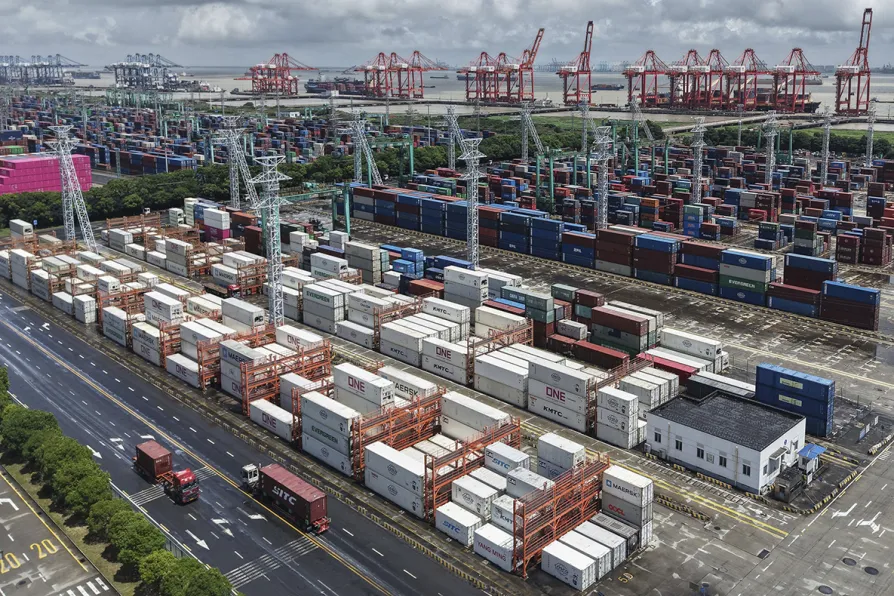
 Trucks loaded with container move through a container terminal port in Shanghai, China, July 30, 2025
Trucks loaded with container move through a container terminal port in Shanghai, China, July 30, 2025
IN 1931 the London publishers Jonathan Cape brought out a 218-page book Moscow has Plan. Strikingly illustrated in Futurist style by the Australian graphic artist William Kermode it contrasted the crisis conditions in the Depression-era economies of the capitalist West with the great progress being made in constructing the Soviet Union’s socialist economy.
Remarkably free of hyperbole and grounded in the hard-headed realism of people directly building socialism it made clear where they lagged behind in technology and modern methods — while charting the remarkable growth in labour productivity, improving health and literacy, reducing child mortality and raising life expectancy — to give voice to confidence in their socialist plan.
Today China is preparing for the next stage in its economic and social development with its fourteenth economic plan. The conditions are vastly different but understanding the continuities between the stellar success of the early Soviet economy and China’s contemporary achievements is critical.
The foundation of the Soviet success was socialist ownership of the key branches of the economy combined with state planning. To these objective factors we can add two critical subjective factors — the vast mobilisation of the working class and the peasant masses and the organising social role of the working class party.
In the year the book was published in an English translation Stalin warned the Soviet peoples that they had a decade in which to prepare for an attack from the West. It was to the success of their planned socialist economy — combined with a vast patriotic and internationalist mobilisation – that the Nazi extermination machine was itself exterminated.
A quarter of all World War II casualties were Chinese with 20 million dead and the Chinese communists took power in a backward country ruined by Japanese occupation and civil war. People and party were determined never again to be subject to foreign domination and the basis of the their success in the decades since has been precisely the combination of public ownership and a planned economy.
Of course, global economic realities are different today and especially since the negation of the socialist economies of Europe and the Soviet Union by counter revolution.
The Chinese have been remarkably creative in finding ways to integrate into the global capitalist economy, tap into advanced technologies, find markets for their expanding industries and have leveraged the socialist and planned elements in their economic management to challenge the capitalist world.
Particularly striking in their presentation of their plan is the emphasis on expanding the social security, health and education sectors, in perfecting urban planning and in shifting to a carbon neutral economy.
It is in the latter that the combination of state planning and social ownership is most vital and there are many leaves our country can take out of the book of Chinese economic and social planning.
Amid these great advances there are, of course great problems. Integration into the global capitalist economy with the concessions to bourgeois materialism and consumer culture that this, of necessity, entails raises great ideological challenges to China’s communists. And every extension of capitalist property relations carries with its new ideological problems and the inevitable clash of class interests.
This is a great creative endeavour taking place in an exceedingly dangerous global climate of confrontation and competition in which our country is complicit in imperialism’s strategy to defeat Chinese socialism.
China’s friends view these processes with intense interests and in solidarity. But should also examine it closely to see how, in the transition from capitalism to a socialism with British characteristics we can leverage social ownership of our productive economy and public services with a united front government that can open the way to working-class power and socialism.

BEN CHACKO welcomes a masterful analysis that puts class struggle back at the heart of our understanding of China’s revolution













